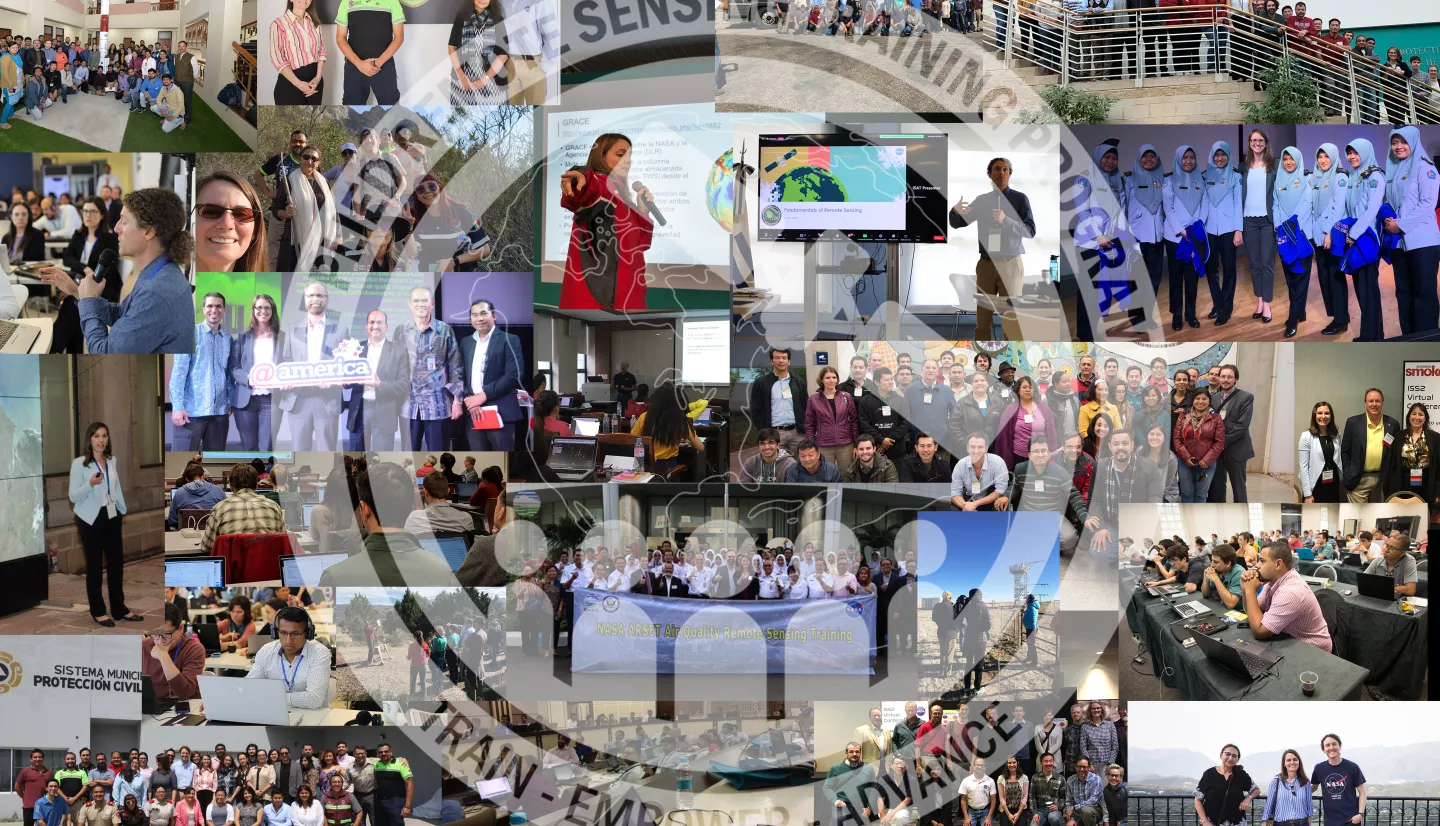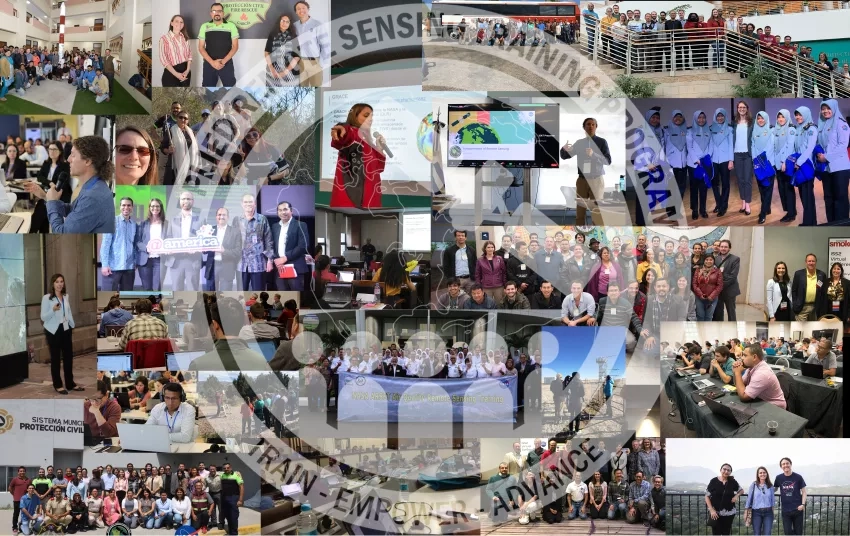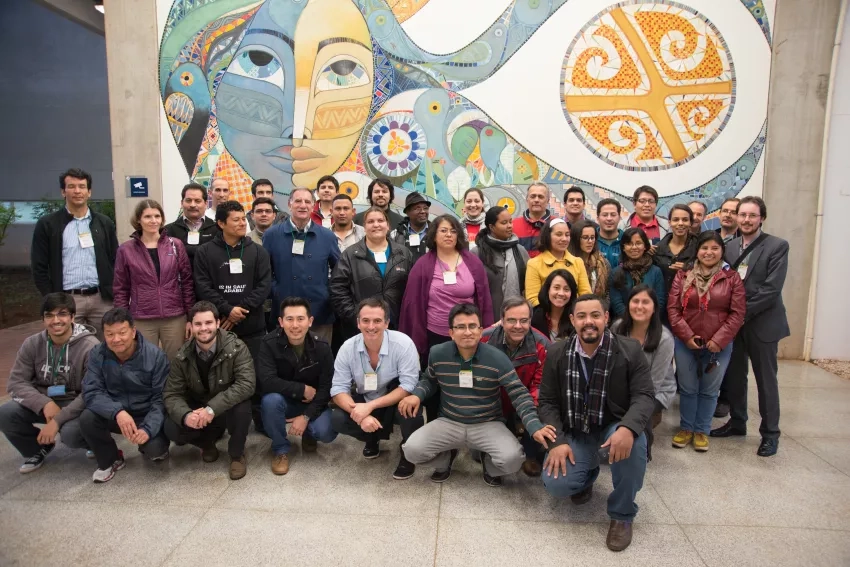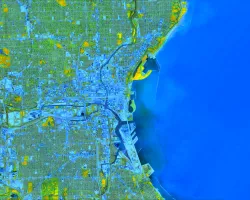NASA’s ARSET Program Trains its 100,000th Participant
From tracking air pollution in South Korea to taking the temperature of a Brazilian forest – NASA has now trained more than 100,000 people on how to find, understand, and use NASA Earth science data.
For many, barriers to entry into the field of remote sensing include cost of software, cost of training, internet access restrictions, and language barriers. NASA Earth observations are already available to the public, but without the support of training, many participants from around the world are still not able to effectively use NASA’s resources.
Enter the Applied Remote SEnsing Training (ARSET) program.
Completely for free, ARSET trains people worldwide in how to use NASA satellite and other Earth science data.
“If you have felt like remote sensing is a cryptic, out-of-reach field, visit ARSET’s training page or YouTube channel and take a look for yourself,” said ARSET’s Jonathan O’Brien.
“Even if you have never looked at a map or worked with satellite data, you will see that there are training options for the newest of beginners all the way to the most experienced of users. If 100,000 others have benefitted from it, so can you,” he adds.
The Start of ARSET
While the majority of ARSET participants come from the United States and India, the program has served people in 183 countries.
Ana Prados was a professor in remote sensing at University of Maryland, Baltimore County. In 2009, at NASA, she saw a need for remote sensing training on air quality, especially among decision- and policy-makers. With guidance from Lawrence Friedl, then head of the NASA Earth Science’s Applied Sciences Air Quality Program, she endeavored to fill the gap.
Reflecting back on the program’s beginnings, Prados said, “Three of us at NASA [Goddard Space Flight Center in Maryland] (myself, Pawan Gupta, and Richard Kleidman) were asked by Lawrence Friedl to do a few trainings on air quality. We immediately jumped on it, using some existing training materials, developing new ones, and beginning our outreach to the U.S. air quality regulatory community. This included organizations such as for example the California Air Resources Board, where we did several early in person trainings.”
“For me this was a dream job,” Prados said, “because I had always been very interested in working directly with the regulators and other environmental managers, so it was an opportunity to create something new for NASA and work with a whole new community of people.”
The trainings are offered at no cost, in multiple languages, using all open-source software, on multiple topics, with synchronous and asynchronous training options.
As ARSET expanded on its early success, it became part of NASA Applied Sciences' Capacity Building program area. The Capacity Building Program exists to build worldwide capacity in the ability to use NASA Earth Observations for decision making.
“ARSET became one of several programs that I was asked to lead from HQ back in 2011,” said the head of Capacity Building, Nancy Searby. “The idea was to find ways that ARSET, DEVELOP, and SERVIR could make more impact when managed as the new Capacity Building Program. At that time, ARSET was mainly focused on air quality, which was the founding thematic emphasis. Back then, we knew the potential value but had no idea of the geographic and user reach that we now are able to achieve. I remember challenges thinking about the thematic areas to grow into, and finding the right experts, and debating the balance of in person vs. online training. Still to today, we strive to deepen our impact with the available resources.”
The first in-person, air quality trainings offered by ARSET would typically involve anywhere from 10 to 50 participants in a classroom setting. At this pace the program was able to reach around 100-200 people a year. But as the program was gaining momentum and recognition, things were about to change.
Going Online and Going Big
In 2013 online trainings were introduced, enabling ARSET to reach many more people at one time and to reach them all over the globe. Current online ARSET trainings host up to 3,000 participants at one time. In addition, ARSET brought more trainers on board with new and unique skill sets from outside of the realm of air quality. “I did not envision webinars with several thousand people as the program has now. I also did not envision growing into a large team that came to feel just like family,” Prados said.
Today, ARSET provides training on the use of remote sensing observations for Agriculture, Health & Air Quality, Water Resources, Ecological Conservation, Disasters, and Climate & Resilience applications. Additionally, ARSET offers many bilingual trainings in English and Spanish, a few in French, and there are plans to develop trainings in more languages .
“ARSET has become well known internationally. We are always being asked to contribute more, and work with others. ARSET is considered a trusted fresh look at the latest applied science and applications that users can use right away,” Searby said.
ARSET has made NASA's remote sensing data, techniques, and tools a practical option for a much wider audience. In 2019 participation doubled compared to 2018. And the very next year, in 2020, it doubled again. The ARSET team also receives positive feedback from participants from post-training surveys and success stories that regularly make their way into the ARSET inbox.
“From the beginning we did user surveys and developed a mechanism for collecting input and feedback on the value of ARSET to training participants and to NASA. This helped us to gradually gain recognition as a valuable component of NASA Earth Science,” Prados said.
“Thank you, to all who have joined us on our journey to today,” said Melanie Follette-Cook, ARSET Project Scientist, on behalf of the ARSET team. “We hope you and others will continue to join us on our road to 200,000!”






